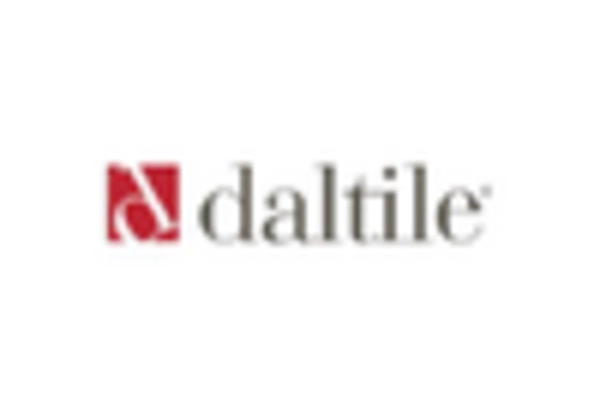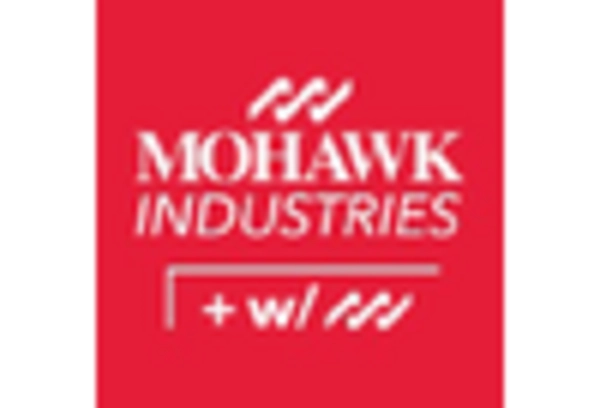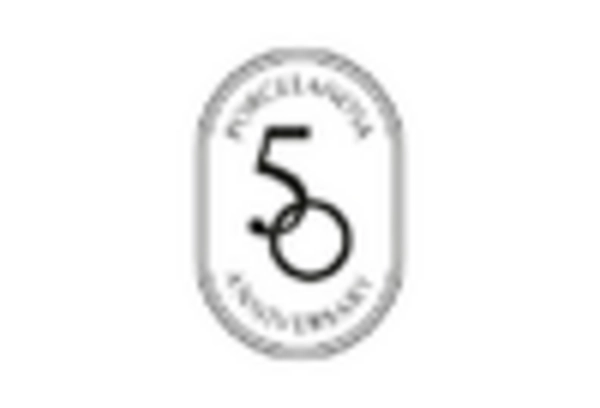Growth in Real Estate Development
The decorative tile market is significantly influenced by the ongoing growth in real estate development within the United States. With urbanization and population growth, there is a rising demand for residential and commercial properties. The National Association of Home Builders indicates that new housing starts are expected to increase by 10% in the coming years, which directly correlates with the demand for decorative tiles. Developers are increasingly incorporating high-quality decorative tiles into their projects to enhance property value and appeal. This trend not only supports the decorative tile market but also encourages manufacturers to innovate and provide a wider range of products that meet the aesthetic and functional needs of modern architecture. The integration of decorative tiles in new constructions is likely to remain a key driver for market growth.
Increased Focus on Sustainability
The decorative tile market is experiencing a growing emphasis on sustainability, as consumers and manufacturers alike prioritize eco-friendly practices. This shift is reflected in the increasing demand for tiles made from recycled materials and those that minimize environmental impact during production. According to industry reports, the market for sustainable building materials is projected to grow by 20% annually, indicating a strong trend towards environmentally conscious choices. The decorative tile market is responding by developing products that not only meet aesthetic needs but also align with sustainability goals. This focus on eco-friendly options is likely to attract a broader customer base, as more consumers seek to make responsible purchasing decisions.
Rising Home Renovation Activities
The decorative tile market experiences a notable boost due to the increasing trend of home renovations across the United States. Homeowners are investing in aesthetic upgrades, with a focus on enhancing interior spaces. According to recent data, the home improvement market is projected to reach approximately $450 billion by 2025, indicating a robust demand for decorative tiles. This surge in renovation activities is driven by a desire for personalized living spaces, where decorative tiles play a crucial role in achieving unique designs. The decorative tile market benefits from this trend as consumers seek to incorporate stylish and functional tiles in kitchens, bathrooms, and living areas. As a result, manufacturers are responding with innovative designs and diverse product offerings to cater to evolving consumer preferences.
Influence of Interior Design Trends
The decorative tile market is significantly shaped by evolving interior design trends that emphasize aesthetics and functionality. Current trends highlight the use of bold colors, intricate patterns, and eco-friendly materials, which are increasingly favored by designers and homeowners alike. The American Society of Interior Designers reports that 75% of designers incorporate decorative tiles into their projects, showcasing their importance in modern design. This influence drives demand for innovative tile designs that align with contemporary aesthetics. As the decorative tile market adapts to these trends, manufacturers are likely to invest in research and development to create products that resonate with current design philosophies, thereby enhancing their market position.
Consumer Preference for Customization
The decorative tile market is witnessing a shift towards customization as consumers increasingly seek personalized solutions for their spaces. This trend is particularly evident in the residential sector, where homeowners desire unique designs that reflect their individual tastes. A survey indicates that over 60% of consumers are willing to pay a premium for customized decorative tiles, suggesting a lucrative opportunity for manufacturers in the decorative tile market. This demand for tailored products encourages innovation in design and production processes, allowing for a diverse range of styles, colors, and materials. As consumers prioritize personalization, the decorative tile market is likely to expand, with manufacturers focusing on offering bespoke solutions that cater to specific customer preferences.

















Leave a Comment